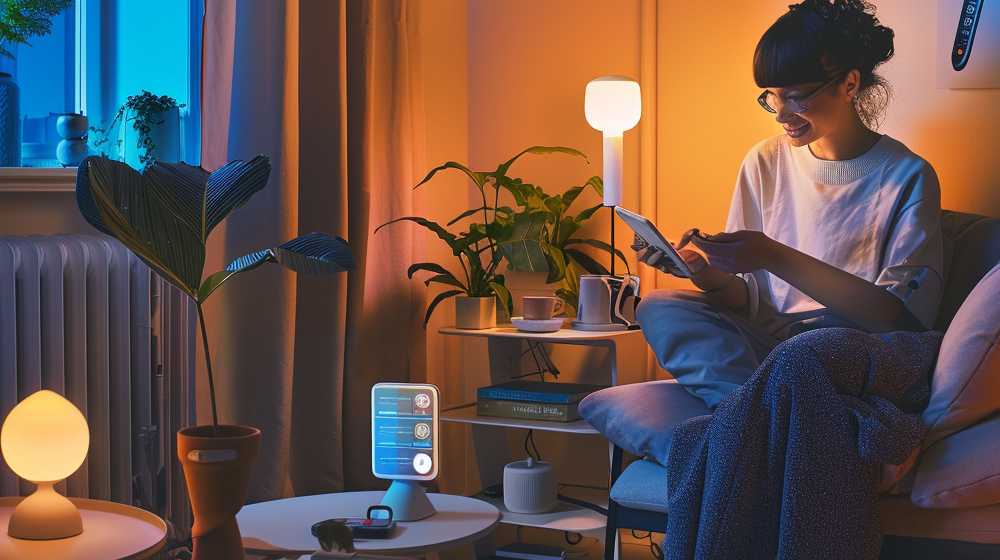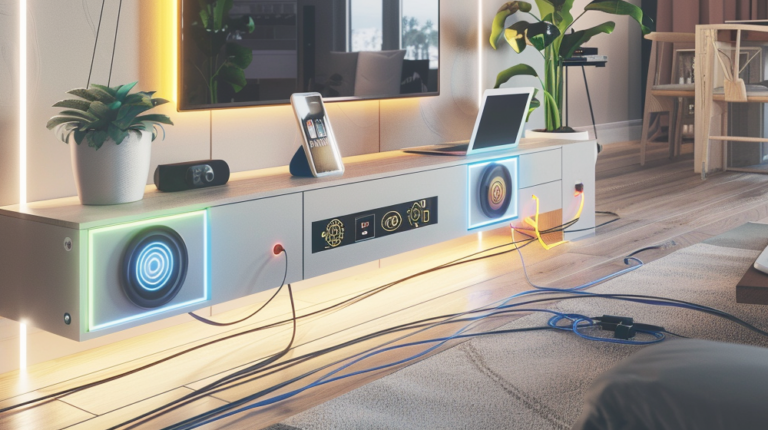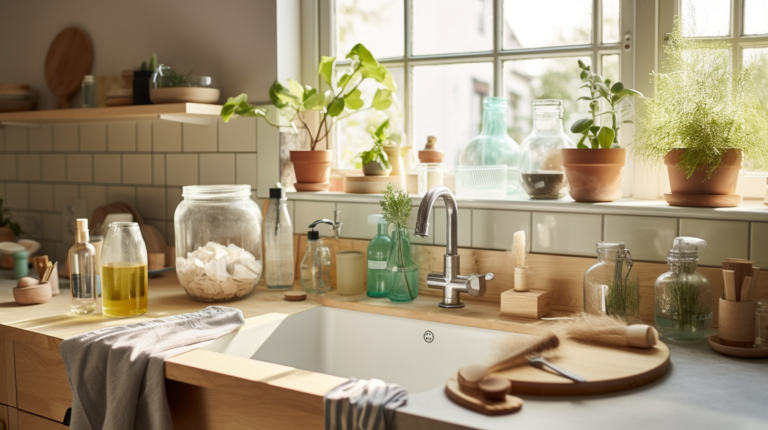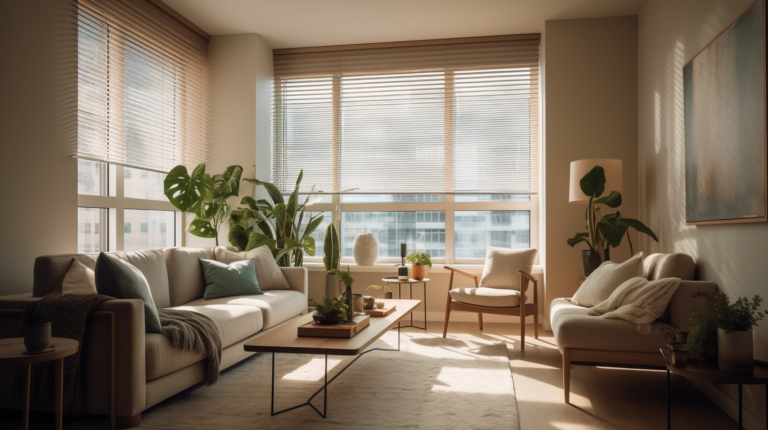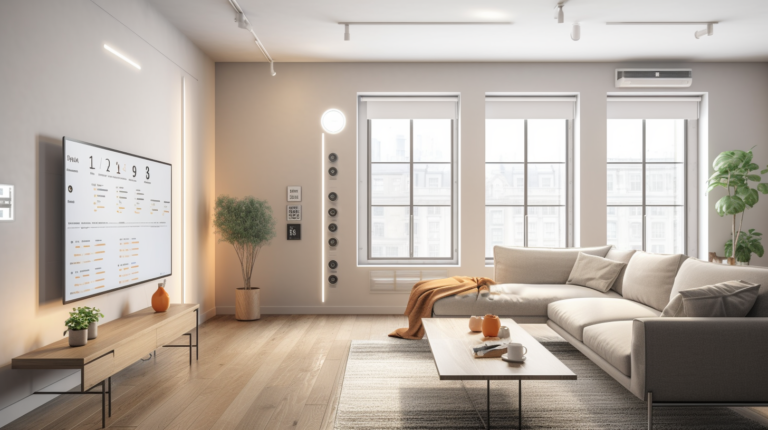smart Energy-Saving devices
Homeowners no longer have exclusive access to smart house technology. Renters and apartment dwellers may now take advantage of the convenience and environmental advantages of home automation without risking their security deposits thanks to the expanding market for renter-friendly, temporary smart gadgets. These plug-and-play solutions may be moved with you to your next location and don’t require any wiring, structural modifications, or landlord approvals.
The Argument for Smart Home Technology in the Environment
Prior to investigating particular gadgets, it’s important to comprehend the advantages of sustainability:
- Automated efficiency: Devices follow optimal patterns without constant human input.
- Remote management: Control systems from anywhere to prevent waste.
- Adaptive learning: Advanced systems adapt to behavior patterns for maximum efficiency.
- Energy optimization: Smart devices reduce waste by operating only when needed.
- Consumption awareness: Usage tracking creates accountability for conservation.
Plug-and-Play Intelligent Lighting Systems
An ideal starting point for the introduction of smart homes is lighting:
Intelligent Light Bulbs
- Install into existing fixtures like standard lightbulbs
- Operate with voice assistants or smartphone apps
- Program schedules, color temperature, and dimming
- Monitor energy consumption over time
Complete color control, voice assistant compatibility, and smartphone connectivity are all features of the Philips Hue White and Color Ambiance Smart Bulb, which connects to your smartphone without the need for a hub or further installation. Just swap out your old lightbulb to take advantage of energy-saving adjustable illumination.
Intelligent Lighting Plugs
- Convert current lamps into smart lighting
- Build circuits that activate and deactivate in response to triggers or schedules
- Combine several lights for scene-based control
- Avoid energy waste from lights that are left on
Climate Control Without Installing It Permanently
The majority of household energy consumption is usually attributed to heating and cooling.
Intelligent Portable AC Control Systems
- Install smart-capable window units or portable air conditioners
- Create automated schedules based on temperature
- Turn on geofencing to change when you go and come back
- Remotely access controls to avoid needless operations
Astute Fans
- Adapt the speed to the ambient temperature
- Plan to run during the hottest parts of the day
- Connect with other cooling systems for optimal performance
- Enable air circulation while using the least amount of energy possible
Renters’ Guide to Water Conservation Technology
Although it can be more difficult to monitor water usage, conservation is just as crucial:
Intelligent Shower Equipment
- Monitor water consumption in real time
- Establish objectives for taking shorter, more effective showers
- Send out notifications when preset thresholds are reached
- Preset temperatures can be saved to cut down on water wastage while modifying
Attachments for Faucets
- Enhance current kitchen or bathroom faucets with smart features
- Measure water usage by fixture
- Set up automated shut-off triggers
- Find possible leaks before they cause damage
Solutions for Energy Monitoring
When it comes to conservation, information is power:
Power Meters That Plug In
- Monitor the energy consumption of certain devices
- Determine the energy guzzlers in your rental property
- Compile usage data to inform conservation initiatives
- Set up notifications for odd consumption trends
Monitoring the Entire Apartment
- Sensors that are non-invasive and fastened to the main electrical panels
- Make major appliances’ energy fingerprints
- Get personalized conservation advice
- Compare usage to that of comparable households
Smart Home Considerations Particular to Rentals
Consider the following when choosing smart devices for rental spaces:
Needs for the Internet
- Select gadgets that can connect to mobile hotspots if needed
- Think about backup control strategies in case wifi goes down
- Search for systems that can continue to operate at a basic level without a cloud connection
- Analyze the bandwidth needs of several devices
Compatibility with Roommates
- Consider the privacy implications of shared smart devices
- Choose systems with numerous user accounts
- Provide clear procedures for overriding automated settings
- Select user-friendly interfaces that are accessible to both tech-savvy and non-tech-savvy users
Planning for Portability
- Before making any modifications, note the initial settings
- Preserve the original packaging to make relocation easier
- Keep track of the devices and where they are located
- Choose systems that are simple to adapt to new settings
Cost-effective Implementation Method
Begin modestly and grow gradually.
- Start with one high-impact area, usually climate control or lighting
- Include suitable gadgets in the same network
- Pay attention to areas that yield quantifiable returns on investment
- Search for smart technology incentives or rebates from energy providers
Smart home technology provides a potent means for environmentally conscientious tenants to lessen their influence on the environment without making long-term changes. You can design an energy-efficient living area that travels with you from rental to rental, saving money and resources wherever you go, by carefully choosing and putting these portable smart solutions into practice.
